Book Talk: What I Read in July
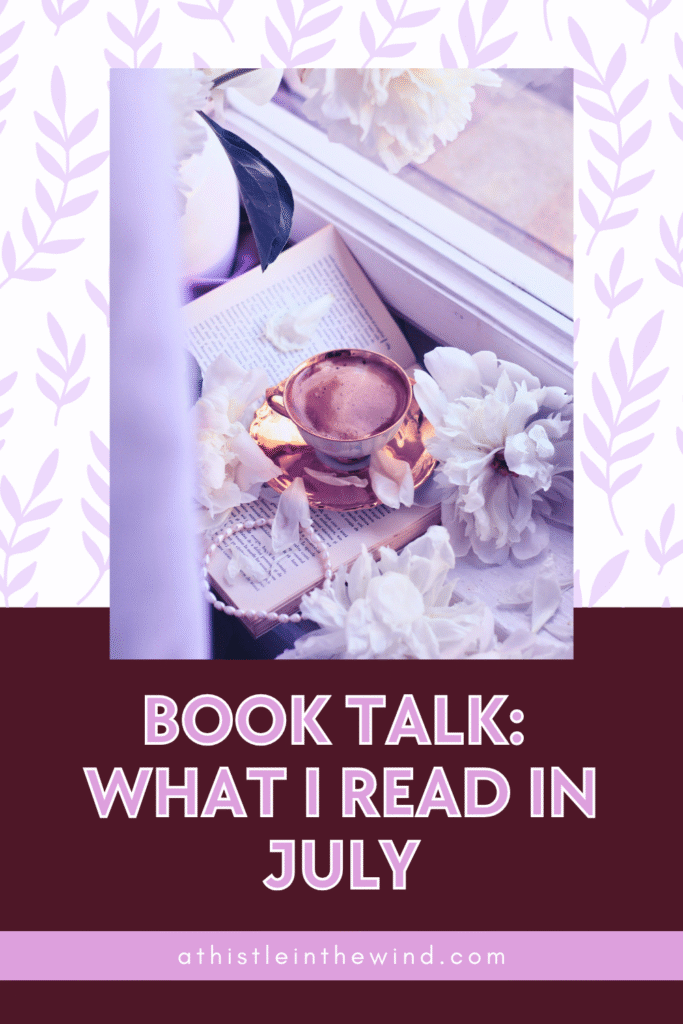
Consider this me making up for the late June reading list. Anyway, this month, I decided to save myself from stress and actually read the reviews before choosing which books to read. Since I’m back in school these days, most of what I read in July was meant to help me relax and escape from the laws of thermodynamics.
Seriously, I completely forgot why I hated chemistry back in high school. Summer school reminded me of that, even though granted, it’s been less chemical equations and more balancing energy equations.
Let me know if you want me to do a blog on my summer school experience. It’s been fun so far. I found that the wind tunnel project that was in construction when I was in school finally finished, and it’s really cool. If any one of you is into stuff like that, let me know.
Anyway, back to the book reviews for July. This blog might feel a bit disjointed from my usual writing, but I had those scheduled and I write these in real-time at the end of the month. So, if it comes across as a little low energy, it’s because I’ve been feeling a bit under the weather.
It’s super hot here. Anyway, let’s start.
July Breakdown: Book Recommendations
This month, I was able to read one and a half books a week. I was also looking for fun stuff. After Atmosphere from last month (huge high for us), I decided to really look into the books I read. Like, I’d mostly turn to the classics or my own favourite writers. I’m not particularly adventurous with new books unless someone highly recommends something.
But this month, I was the one who lurked around BookTube and found books I’d be into. Here’s a list of what I read in July:
- Yellowface by R.F. Kuang
- The Correspondent by Virginia Evans
- A Story of Yesterday by Sergio Cobo
- The Very Secret Society of Irregular Witches by Sangu Mandanna
- The Picture of Dorian Gray by Oscar Wilde
- Being a Witch, and Other Things I Didn’t Ask For by Sara Pascoe
Book 1: Yellowface
- Author: R.F. Kuang
- Genre: Contemporary Fiction
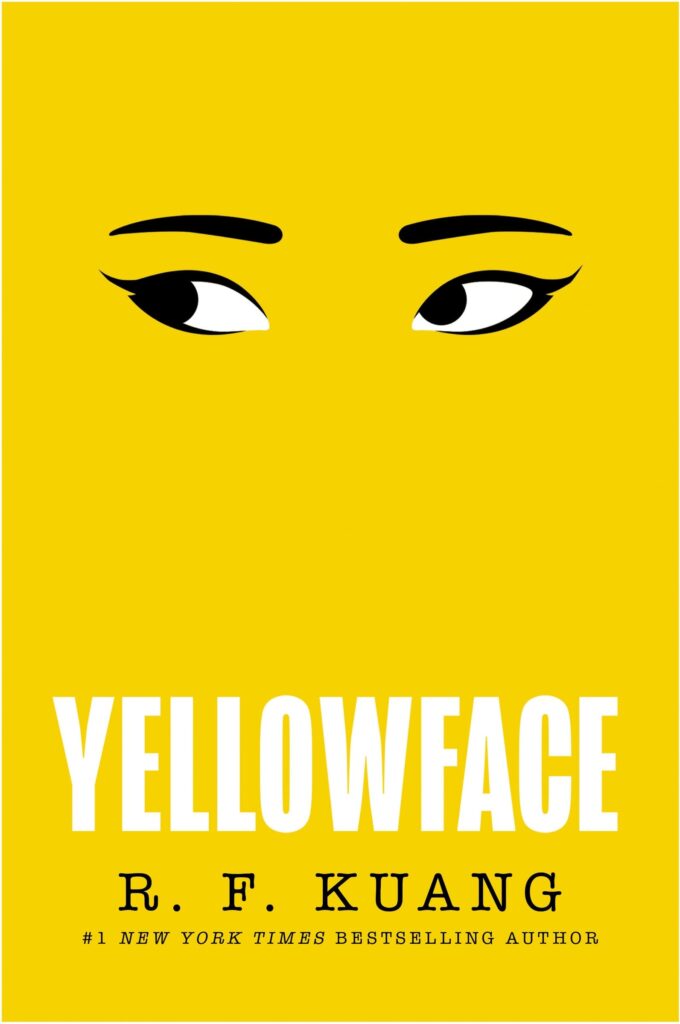
Why I Picked It Up
I found this book under the recommendations section of my Goodreads page and let me tell you: it got me hooked from the synopsis. I don’t know if many of you are locked into the book communities on TikTok and YouTube but a few months ago, this writer was exposed for leaving bad reviews for her fellow debut authors’ (of colour ONLY, by the way) books.
And it made me feel a certain way. Because while it’s never been aggressive, in my career, I’m sad to say that only certain women have always had it for me. Seriously, it’s weird. Like, I’ve worked with some amazing women over the years, but I’ve also experienced two instances of what can only be described as racism—or at the very least, internalise misogyny.
So, this book was an immediate: okay, let’s see what consequences people like this have to deal with. Because in my life, a teary, shaky voice and pout often got such women off the hook, when it would’ve beenn career ending for men. That’s not feminism, folks but we’re going off on a tangent.
Summary
June Hayward witnesses the death of her frenemy Athena Liu, steals Athena’s unpublished WW I manuscript, drastically edits it, and publishes under the racially ambiguous pen name Juniper Song. Overnight she hits the big leagues but as whispers of plagiarism and cultural appropriation surface online, her lies unravel and haunting voices from Athena’s legacy drag June into a meltdown she half‑believes is supernatural.
What I Liked
As I said, I really, really liked the premise and this book did not disappoint. I loved the relentless dark humor and how Kuang makes you complicit in June’s awful magnetism. The unreliable narrator approach is genius here. June’s mania and entitlement are cringe, hilarious and exactly what I expected from this.
Yellowface is quick, propulsive, and stings when it hits on the publishing industry’s diversity fetish and hypocrisy. The commentary on cancel‑culture dogpiling and gatekeeping felt raw and real, with an insider’s edge to the literary world you won’t see in most satires.
Downsides
Personally, I didn’t have complaints with this book. And even though I was cool with it, I think a more objective reader will fid the supporting cast to be largely unsympathetic, which works thematically but can make the emotional stakes feel hollow.
June also lacks a certain depth and continuity—she flips from self‑righteous to suicidal psychosis and back in ways that sometimes come off abrupt or even gimmicky. And yeah—it’s heavy, but you might feel like you need context. I frankly didn’t care about June enough, but as a reader, you might. So, be ready for that.
Final Thoughts & Who Should Read It
This is a fierce, uncomfortable book with sharp edges—perfect if you’re into books that don’t pull punches. If you want messy characters, toxic ambition, publishing drama, and provocations about identity theft in art—dig in. But don’t expect a warm, fuzzy story. It’s ideal for readers who like their fiction with spitfire commentary and a mirror held up to industry biases.
Book 2: The Correspondent
- Author: Virginia Evans
- Genre: Contemporary Fiction
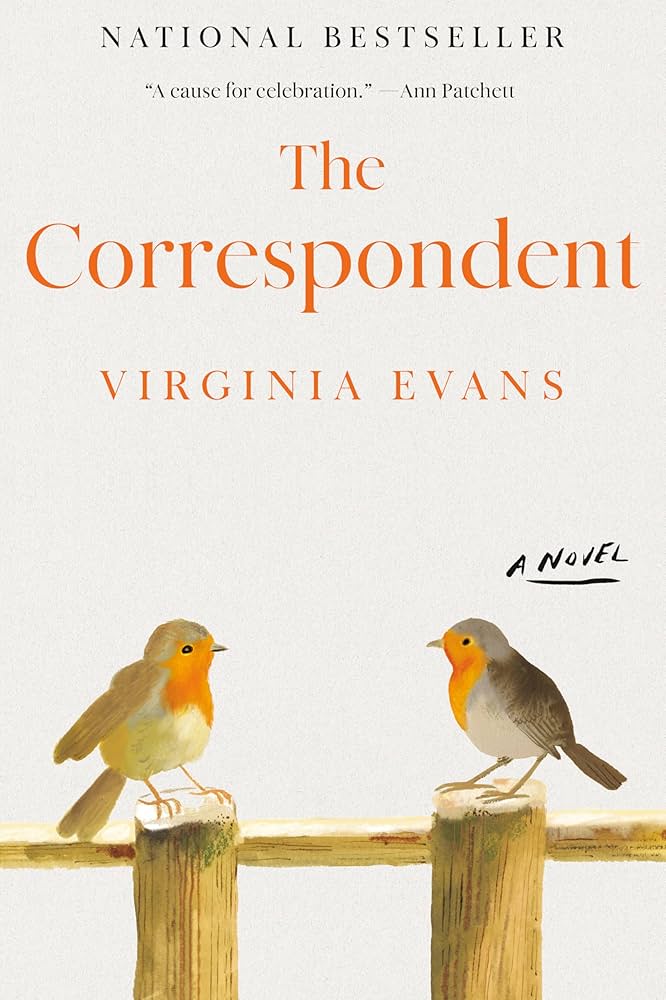
Why I Picked It Up
After Yellowface, I was craving a quiet, character‑driven read. And that’s exactly what I got from this. Sybil Van Antwerp, a retired septuagenarian who lives solo and writes letters to everyone, seemed like a fresh protagonist.
Summary
Told entirely through letters and emails, The Correspondent follows Sybil Van Antwerp, a retired lawyer and grandmother navigating grief, estranged relationships, and aging vision loss. She writes to family, authors, strangers, even a child in need, unearthing regrets, longings, and forgiveness. As relationships unfold over time, a portrait of a prickly, complex woman emerges—one whose life feels both small and profound in the winter season of her journey.
What I Liked
Evans nails a bittersweet, character‑driven story. Sybil is blunt, sharp-witted, endlessly curious, and heartbreakingly human. The structure reveals her layers slowly: every letter peels back history, guilt, and compassion. It’s effortlessly readable yet emotionally rich.
Downsides
If you’re into fast action or plot twists, this will feel slow. It leans introspective and episodic a lot, relying heavily on inference to track dozens of correspondents across time. And the format demands continous attention to context shifts and unnamed correspondents. In the end, it’s rewarding, but not effortless.
Final Thoughts & Who Should Read It
A slow-burning, contemplative gem. Ideal if you love character-first stories, thoughtful literary fiction, and old-school letter writing as art. It’s tender, sharp, and full of regrets and redemption.
Book 3: A Story of Yesterday
- Author: Sergio Cobo
- Genre: Thriller, Mystery
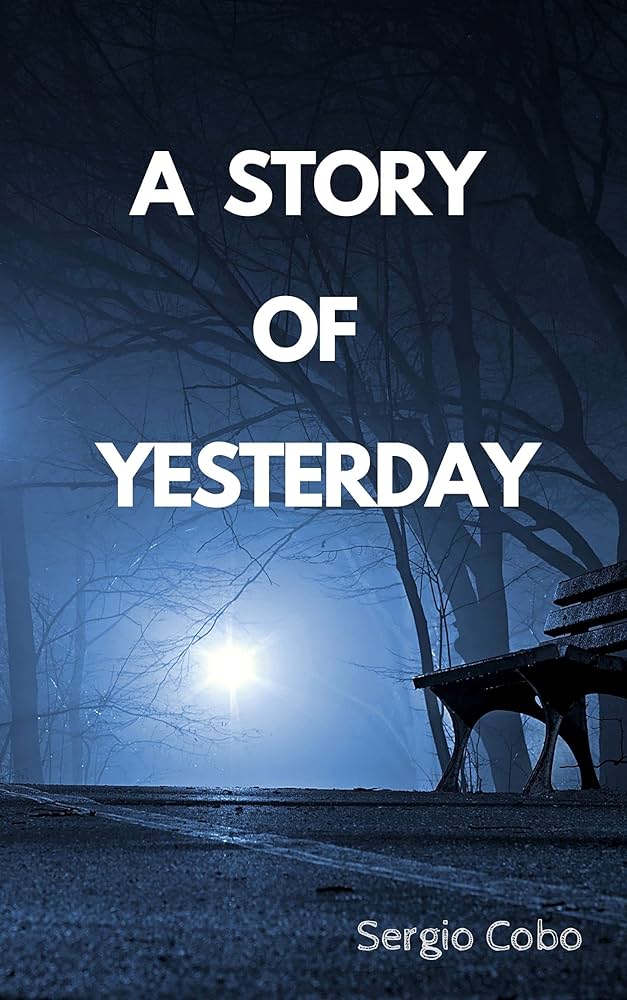
Why I Picked It Up
I was drawn in by the promise of a tight, twisty mystery with interlocking perspectives and magical‑realism vibes. Also wanted to see how the translation held up, since multiple sources flagged that as a risky spot. Brief, twist‑driven thrillers are my favourites, but this really took the cake.
Summary
A Story of Yesterday weaves several characters together through a fractured timeline. Told in shifting perspectives, the story slowly reveals how Lara and Víctor’s tragic pasts intersect in surprising ways.
There’s emotional tension, spectral overtones, and choices with ripple effects. The narrative jumps back and forth to expose secrets, leading to a dark, satisfying resolution where survival, memory, and fate collide under a surreal sky of shifting colors.
What I Liked
Cobo packs a punch in limited pages; fast pacing, unexpected reveals, and a weirdly poetic flair. The structure, using multiple POVs and time shifts, teases the truth effectively. And translation issues aside, it delivers emotional impact within a compact frame. For fans of short, atmospheric mysteries that feel bigger than their word‑count, it hits hard.
Downsides
Biggest hurdle? Translation. Multiple sources said the English edition felt butchered—awkward grammar, misused pronouns, and lost nuance, often making the story confusing. At under 70 pages, character depth is minimal: you get glimpses, not full lives. That’s fine if you want flash, but if you crave emotional immersion, it’s too thin.
The fragmented timeline and rapid shifts can be disorienting, especially if you’re jumping POVs without clear markers. And some plot hooks aren’t fully fleshed out, leaving you curious but unsatisfied. In short: style over substance, atmosphere over emotional pay‑off.
Final Thoughts & Who Should Read It
A lean, moody novella geared for those who like brief, twist-heavy mysteries with a dose of magical realism. Great if you’re into unconventional structure and pacing, and can tolerate a shaky translation. Skip it if you want fully fleshed characters or emotional depth. Fans of atmospheric short fiction or experimental timelines will dig it—just maybe read it in Spanish if you can.
Book 4: The Very Secret Society of Irregular Witches
- Author: Sangu Mandanna
- Genre: Fantasy, Contemporary Fiction
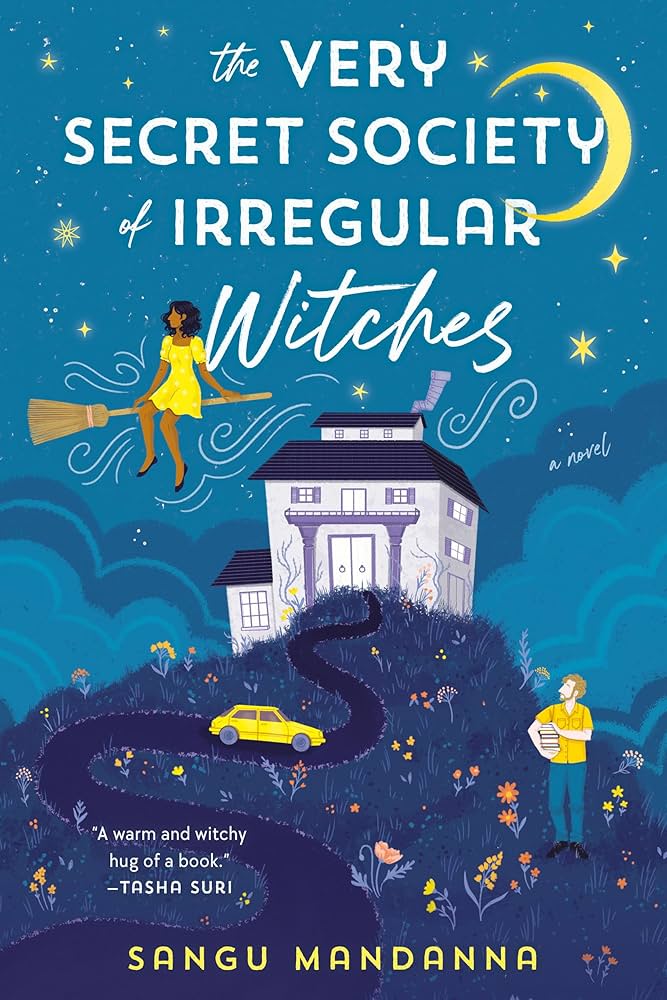
Why I Picked It Up
I wanted something cozy and charming to reset after darker reads. Prompted by the buzz, “House in the Cerulean Sea but with witches and spice,” this one looked perfect: found-family magic, slow-burn romance, and a grumpy librarian.
I was also intrigued by the British seaside setting and a witch who’s been hiding her powers forever. I was ready for something gentle but magical, with heart and laughs, and I saw Mandanna’s name popping on recommendation lists, so I dived in.
Summary
Mika Moon lives isolated, hiding her magic per her mentor’s rules. But when she receives an invite to teach three young witches at Norfolk’s Nowhere House, she accepts, and slowly builds a found family. Alongside quirky caretakers and the prickly librarian Jamie, she finds belonging, connection, and a spark of love. But with outsiders sniffing around and magical rules to break, Mika must decide if following her heart, and embracing her power, is worth the risk.
What I Liked
It’s a cozy fantasy hug in book form. Mandanna’s characters are delightfully quirky; Mika’s warmth, Jamie’s grumpy-sunshine charm, and the children witches make the found‑family dynamic feel real and caring.
The setting, that Norfolk cottage vibe, reads like cottagecore perfection. The romance unfolds slow but satisfying, with emotional payoff. The balance between whimsical magic, gentle humor, and emotional stakes works well. It’s breezy, feel-good fantasy that still carries depth when needed.
Downsides
If you’re itching for high-stakes plot, don’t expect it here: it’s more cozy slow burn than adventure. You might find the pacing leisurely, with not much tension until the midpoint. The magical world might feel under‑developed; the rules are hinted at but not deeply explored. And while the found family trope is sweet, the stakes never feel dangerous; threats are mostly soft, emotional rather than life-or-death. Overall, The Very Secret Society of Irregular Witches is lovely, but don’t come expecting epic or edgy. It’s more like a cozy blanket than a sword fight.
Final Thoughts & Who Should Read It
A gentle, witchy romance filled with found‑family vibes and a breezy seaside setting. Perfect for readers who want warmth, comfort, subtle magic, and slow hint-of-intimacy romance. If you dig quirky characters, soft drama, and emotional coziness—this is your book. Skip it if you need plot propulsion, plot twists, or bigger magical world-building. Ideal for fans of cozy fantasy, smoldering-but-soft romance, and inclusive, feel-good storytelling.
Book 5: The Picture of Dorian Gray
- Author: Oscar Wilde
- Genre: Gothic Fantasy
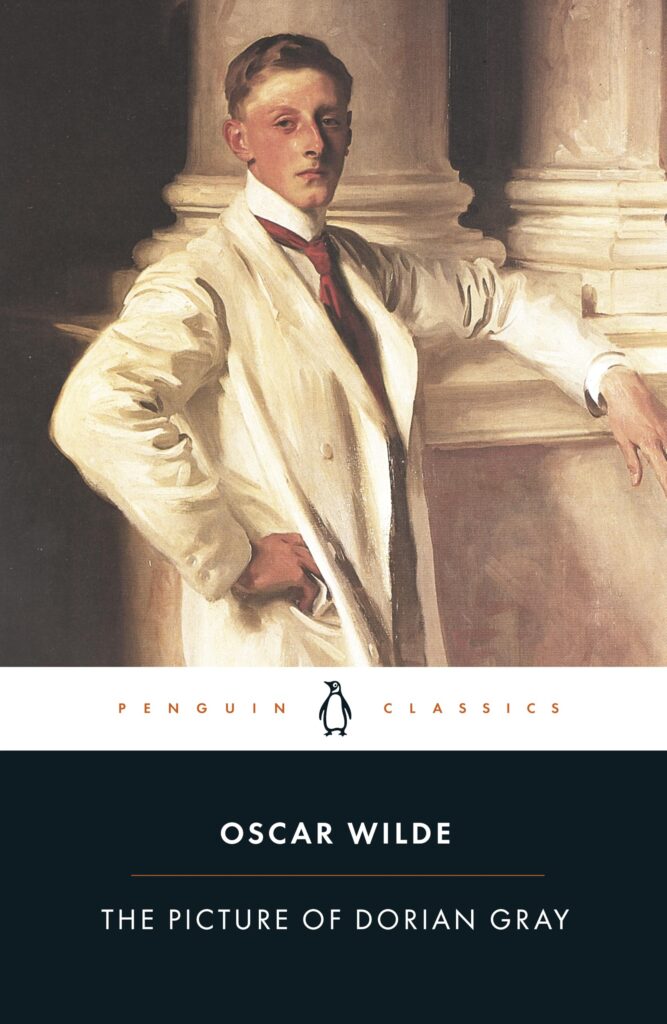
Why I Picked It Up
I wanted something classic, decadent, and wickedly clever, and this novel’s reputation as a dark morality tale lured me in. Wilde’s aphoristic style, queer undercurrents, and the concept of eternal youth tied to moral decay felt untouchably Gothic.
Plus, hearing it’s one of the most controversial and quotable works in literature (and landmark for LGBTQ+ themes) made me want to see what all the fuss is about in its original form. It’s stood the test of time, and I wanted to know why.
Summary
In Victorian London, Dorian Gray sells his soul to remain eternally youthful while a portrait painted by his friend Basil ages instead. Under the influence of the hedonistic Lord Henry, Dorian indulges in debauchery, cruelty, and vice with no visible consequences. But the portrait morphs grotesquely with every sin, revealing the slowly corrupting truth of his soul.
What I Liked
Wilde’s prose is razor-sharp, dripping with wit and philosophical punch. Themes of beauty, vanity, and aestheticism are woven with decadent, dark glamour. It’s both eerie and thought-provoking: the portrait hauntingly externalizes inner rot. Basil’s morality, Lord Henry’s seductive corruption, Dorian’s decline; Wilde crafts a tightly moral allegory that still feels timely.
Downsides
You might find the characters thin, Dorian is more symbol than flesh, Lord Henry is a philosophizing douchebag, and Basil is only there as the voice of conscience.
Final Thoughts & Who Should Read It
This one’s a timeless Gothic cautionary tale wrapped in velvet decadence—perfect if you thrive on wit, style, and speculative moral rot. Ideal for lovers of classic literature, dark psychological stories, and aestheticist philosophy. Skip it if you need fleshed-out characters or emotional realism, or if preachy decadence grates on you.
Book 6: Being a Witch, and Other Things I Didn’t Ask For
- Author: Sara Pascoe
- Genre: Fantasy
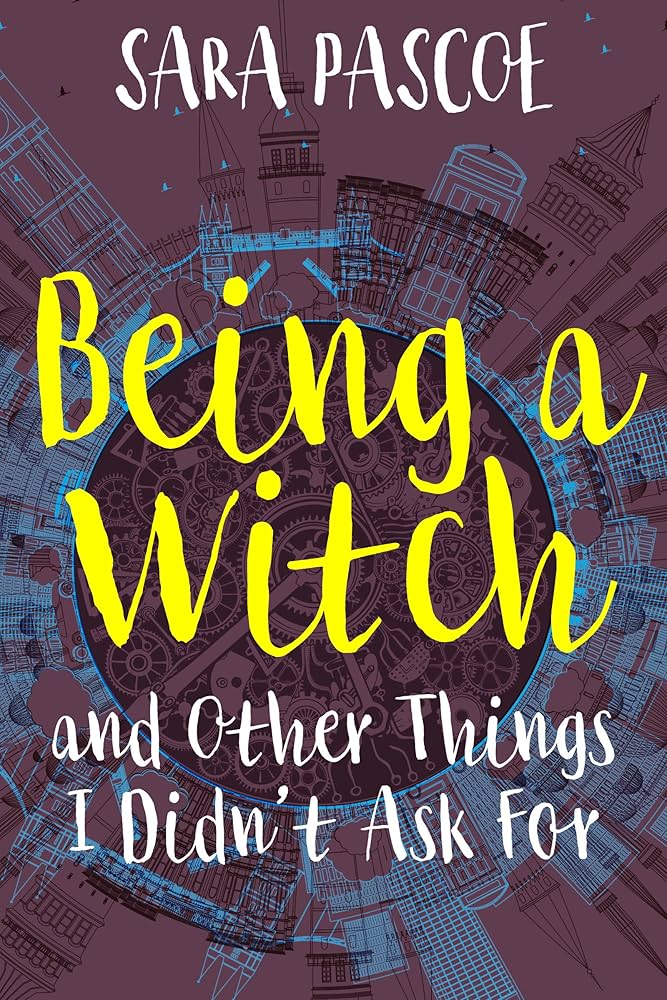
Why I Picked It Up
Yes, I know. Another witchy story? I was feeling some kind of way this month, so I decided to read a fun YA. And this one delivered. Being a Witch, and Other Things I Didn’t Ask For is your standard magical fantasy with real-world issues: foster care, grief, identity—and time travel just adds to the twist.
Sara Pascoe’s blend of teenage voice, historical settings, and quirky witchcraft promised something different. And as an actual Istanbulite, I won’t lie: I do love media that references places I’ve live in.
Summary
Raya is a 14-year-old in foster care dealing with visions and guilt over her absent mother. She runs off to London and discovers she’s an “integrator” (witch), awakening chaos. When she accidentally time-travels to 1645 England’s witch trials with her familiar Oscar (a talking cat) and social worker Bryony, they must navigate danger. The portal misfires, thrusting them into Ottoman-era Istanbul. Raya learns to harness her powers and confront trauma across centuries before finding a way home.
What I Liked
Pascoe delivers fast-paced YA energy with emotional heart. Raya’s voice—mouthy, insecure, yet hopeful—is very relatable. Time travel mechanics tied to her guilt feel imaginative and symbolic. Settings—from 17th-century England to Ottoman Istanbul—are vivid and richly described, and the talking cat Oscar adds moments of levity. The mix of historical detail, coming-of-age themes, and magical realism was surprisingly effective.
Downsides
If you’re not a fan of YA, this might not be your cup of tea. This book has a younger protagonist, a simpler structure, and the voice can feel juvenile if you’re reading as an older adult. The pacing might feel bumpy. It’s slow at the start when the writer sets up foster life, zippy through trials in England, and then stalls in Istanbul before rushing the resolution.
Final Thoughts & Who Should Read It
A whimsical YA time-travel fantasy with historical flavor and a tough, sarcastic teen at the center. Best for readers who like magic-meets-real-life-without-lectures, especially younger teens or anyone craving light, spirited feminist fantasy with emotional undertones. This story’s ideal for those looking for a breezy, character-driven story with some cultural and historical texture.
What I Read in July: Summary & Favourite (and Least Favorite) Book
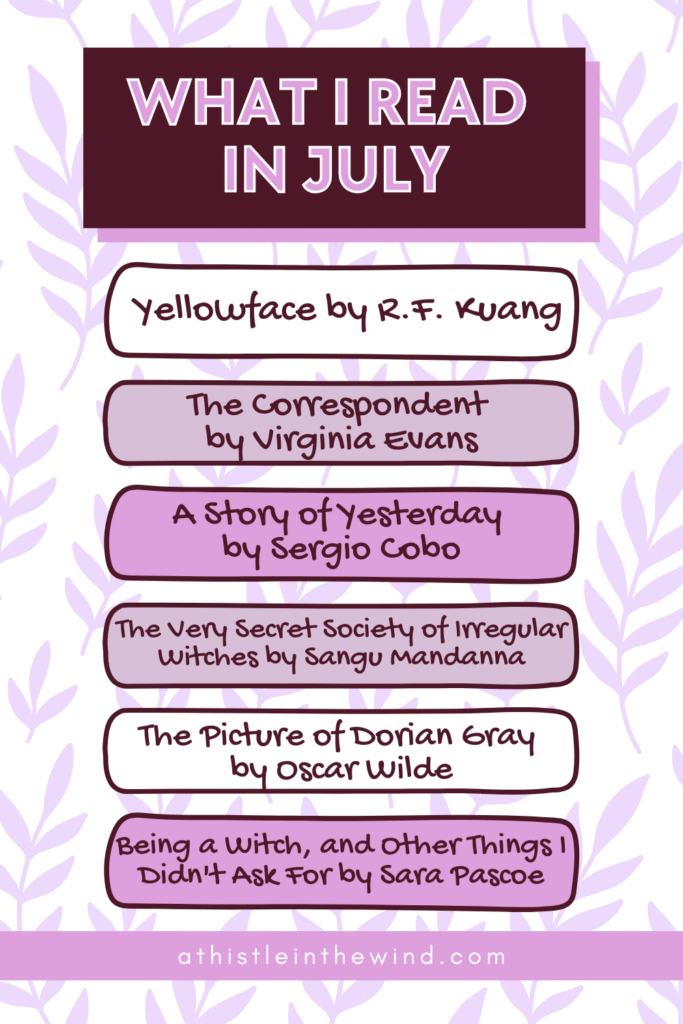
For the month of July, I read a bunch of different genres: cozy witches, industry vultures, cursed portraits, time-travel foster kids, and a novella that did more damage in less than a hundred pages than most books manage at four times the length.
Honestly, this month was good for me. I’m so happy I didn’t want to rip my hair out like I did after reading A Simple Favour last month.
The Very Secret Society of Irregular Witches was my clear favorite. Pure comfort, found-family, and actual softness that didn’t make me roll my eyes. I’d recommend it to anyone who’s over trauma dumping in fiction.
The other stories were great to, but if I had to pick a least favourite, it would be Being a Witch, and Other Things I Didn’t Ask For but that too because of it’s messy pacing and it’s clear younger demographic. I generally don’t care what the target audience for a book is, so yeah. This isn’t a two-star read, I just had to have a least favourite so this one, unfortunately, had to be in this position.
What did you read in July that actually deserved the hype—or didn’t? Leave your recs (or warnings) in the comments.

3 Comments
Dejah Stark
Usually I do not read blogs however I would like to say that this writeup very compelled me to take a look at and do it Your writing style has been amazed me Thank you very nice article
Alessandra Boehm
Your blog has become an indispensable resource for me. I’m always excited to see what new insights you have to offer. Thank you for consistently delivering top-notch content!
Layla Turcotte
Usually I do not read article on blogs however I would like to say that this writeup very compelled me to take a look at and do it Your writing style has been amazed me Thank you very nice article